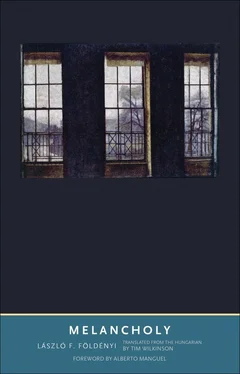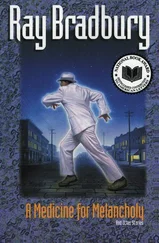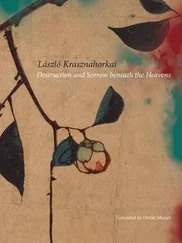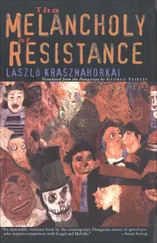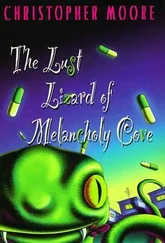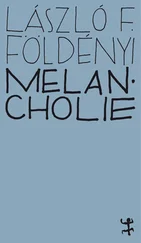Melancholics united in themselves extremes; they were at once divine maniacs — a feature that St. Bernard earlier had been inclined to recognize only in the lives of saints — and dragged down by the lead weight of despair. Ficino and other Renaissance humanists based their judgments of melancholia on that duality. The metaphysical point of view of Plato’s interpretation of mania and the “natural-historical” point of view of Aristotle’s interpretation of melancholia came together for the first time: in Ficino’s opinion, the melancholia of great people corresponded to Plato’s mania. (Half a century before Ficino, Antonio Guainerio, a professor at Padua, had accepted the superiority of melancholics and the divine nature of the melancholic state as a matter of fact.) In his Of Occult Philosophy (1510), Agrippa von Nettesheim writes about the superior inspiration with whose help the soul is able to ascend to the celestial truth, and he distinguishes three forms: dreams ( somnia ); rapture ( raptus ), brought about as a result of continuous contemplation of sublime things; and frenzy ( furor ). The last can be produced by — alongside such noble associates as the Muses, Dionysius, Apollo, or Venus — melancholia, the black choler: “For this, when it is stirred up, burns, and stirs up a madness conducing to knowledge and divination, especially if it be helped by any celestial influx, especially of Saturn, who. . seeing he is the author of secret contemplation, and estranged from all public affairs, and the highest of all the planets, he doth as he withcalls his mind from outward business, so also make it ascend higher, and bestows upon men the knowledge and presages of future things” ( Three Books of Occult Philosophy or Magic , ch. 60, 186).
The humor melancholicus , Agrippa writes, endows humans with marvelous attainments, and depending on whether it lodges in the imagination ( imaginatio ), in the intellect ( ratio ) or in the mind ( mens ), the person in question will become an artist, sculptor, or notable physician, politician, natural scientist, or divine prophet. According to Ficino, melancholia was the precondition of philosophy; according to Dürer, a precondition of art and science; and according to the painter Giovanni Benedetto Castiglione, a precondition of virtue. In light of such judgments, it was hard to consider melancholia a disease (Paracelsus was sharply incensed by the idea that every disease might be derived from melancholia); nonetheless, its peril was undeniable: melancholics struggled in a network of irreconcilable conflicts and labored under a dual threat. On the one hand, so limitless was their solitude that they had a sense of constantly falling, and were attracted by death; 5on the other hand, their awareness of their divine rapture, excellence, and superiority, and the endless contemplation and preoccupation with secrets, which inherently characterized melancholics, were perilous in themselves: melancholics could “slip over” in a trice, losing the ground under their feet, and once more find themselves hurtling into the aforesaid abyss. According to Aristotle, the extremes and the middle were united in melancholia; in a letter written to Jacopo Bracciolini, the Platonist Ficino follows Aristotle:
The reasonable soul is set on a horizon, that is the line dividing the eternal and temporal, because it has a nature midway between the two. Being in the middle, this nature is not only capable of rational power and action, which lead up to the eternal, but also of energies and activities which descend to the temporal. Since these divergent tendencies spring from opposing natures, we see the soul turning at one moment to the eternal and at another to the temporal and so we understand rightly that it partakes of the nature of both. Our Plato
placed the higher part of the soul under the authority of Saturn
, that is, in the realm of mind and divine providence, and the lower part under Jupiter, in the realm of life and fate.
( Meditations on the Soul: Selected Letters of Marsilio Ficino , letter 23; emphasis added)
A melancholic’s path leads upward; however, not only is this path dangerous, but the goal is invisible as well. Instead of a futile tussling with God, attention is focused on the individual, left to himself. From the individual’s point of view, however, fitting in is not the issue, whether in the transcendentally determined universe of the Middle Ages or in the intervention-fraught world as institutionalized by bourgeois society; rather, the issue is absolute autonomy . 6Autonomy from both society and God — that was what innumerable people succeeded in achieving and that was where those who became melancholic failed. That dual determination of melancholia is most striking in Italian portraiture of the Renaissance: the profound sorrow of the portraits is thus comprehensible even if inexplicable. The earlier golden background behind the figures, which lifted them out of space and time, is lost; the landscape that now pops into view in almost every case is not a realistic one, however; it is a convention signaling that the model is sitting in front of the painter in time and space, but even as a mere convention, it makes time and space extrinsic and negligible. There is no all-embracing golden background, but neither is there a realistic earthly background; all we see is a solitary sitter, to whom neither divine timelessness nor earthly temporality is granted. We know nothing of the whereabouts of these sitters: if we sought to extend their location (which can readily be done with portraits of burghers or group pictures), we would be frustrated, because they lack an external world. 7The riddle, which without exception envelops all the portraits, follows from the situation of the figures: they have nothing to do with the world even though they are perceptibly offspring of the world. They have frozen into their own selves. They are stuck outside time of any sort, the divine just as much as the earthly, but they are incapable of creating time by their own power, since all of them are children, creatures, of this world. The shadow of death falls on them, and although they are living, they look straight in the eye of nothingness alone. The line at the corner of their lips indicates that they have overcome death, but their eyes indicate that they are the deadest of all people, if such a state can be graded at all. They too can recite Michelangelo’s lines along with Cecchino dei Bracci, who died young, at sixteen:
From clutch of clock and calendar now fled,
my bondage once, I dread going back again
more than I shrank from death, not knowing then
die meant being born, meant death itself lay dead.
( The Complete Poems of Michelangelo )
It is precisely the Platonism of melancholic Michelangelo that brings one closer to the riddle of the portraits (though Michelangelo himself, out of some unaccountable fear, never painted any portraits): one must rise toward the otherworldly essence in such a way that one remains master of oneself; one’s this-worldly persona has to blend in with the otherworldly essence. Naturally, there can be no room for peace here: teetering between earthly existence and otherworldliness, one becomes a homeless outcast. It is due to this homelessness that the people in theses portraits, who can rightly be regarded as the first and most typical representatives of modern melancholia, appear so sad and distant. What they go through is alarming for them, but what they long for is unattainable. Those who walk into this trap will become melancholics; they will be equally nostalgic for tangible reality and utopia. 8They will not find their place anywhere, and therefore they crave, more than anyone else, simplicity and stability. In the thirteenth century, the Platonist Henry of Ghent distinguished two types of people: those of a metaphysical cast of mind and those who, captives of their sense perception, sought to see everything located spatially. Henry called the latter melancholics: they were unable to take wing, incapable of contemplating non-physical entities (for example, angels), and melancholia was their principal punishment for their hankering for unequivocality. Henry, however, like all Platonists, was fond of one-sidedness, because just as there are no people endowed only with a metaphysical cast of mind or only an earthly view of things, so too melancholia cannot be associated merely with the latter. Keeping the portraits in mind, it seems more likely that those who are incapable of taking root for good in either metaphysics or the world of practice are the ones who become melancholics. Indeed, melancholics of the Renaissance era, thinking of themselves as the beginning and the ultimate goal of being, did not acknowledge this distinction; unaided, they create a world condemned to death from the very first, in which both the metaphysical and the earthly outlook will have to miss their goals. In 1608, Johannes Kepler, the most illustrious astrologer of the age, in drawing up a horoscope for Count Albrecht von Wallenstein, considered the following to be consequences of Saturn: “Saturn in ascendency makes deep, melancholic, always wakeful thoughts, brings inclination for alchemy, magic, sorcery, communion with spirits, scorn and lack of respect of human law and custom, also of all religions, makes everything suspect and to be distrusted which God or humans do” (quoted in Jean-Pierre Lasota, ed., Astronomy at the Frontiers of Science , 299). Melancholics are citizens of a brand-new world that differs from the present one, but that is situated outside space and time (utopia). But melancholics live here, on Earth, and therefore they are also citizens of this earthly world. On the one hand, they are linked to the spirit world (magic spells); on the other, they are slaves of the material world (alchemy); they disdain earthly laws and are constantly brooding on a new existence rooted in nothing. They are typically Faustian figures (it speaks volumes that German Romantics, while revering Dürer as a balanced individual, regarded the female figure in his etching Melencolia I as a Faustian figure racked by doubts); they do not sense anything as being alien, yet on account of their unappeasability, they are characterized by complete homelessness.
Читать дальше
